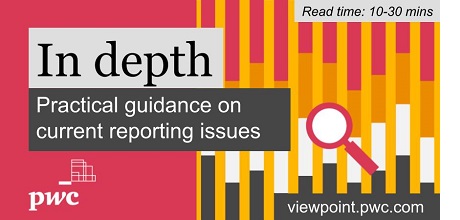There are further complications for entities that need to reference fair value when they account for carbon offsets. As noted above, this could include carbon offset commodities carried by broker-traders at fair value through profit or loss or carbon offset intangibles measured under the revaluation model.
IFRS 13, ‘Fair Value Measurement’, defines fair value as “the price that would be received to sell an asset or paid to transfer a liability in an orderly transaction between market participants at the measurement date”, and it sets out a framework for determining fair values under IFRS.
Some high level factors to consider are included below:
Appendix A to IFRS 13 defines an active market as one
“in which transactions for the asset or liability take place with sufficient frequency and volume to provide pricing information on an ongoing basis”.
A benchmark for evaluating the depth of a market could include active trading days within a given time period. A metric for volume that could also be considered is the average daily turnover ratio. This is calculated by dividing the average daily trading volume by the total amount of outstanding carbon offsets.
IFRS 13 does not define thresholds for frequency (such as active trading days) and volume (such as turnover ratio) to determine if an active market exists. This means that the conclusion requires professional judgement. In assessing whether an active market exists in a region for a particular type of carbon offsets, an entity should also consider whether reliable trading data is available.
In some cases, there might be several markets for a particular type of carbon offsets that meet the definition of an active market and each of those markets might have different prices at the measurement date. In these situations, IFRS 13 requires the entity to determine the principal market for the asset.
The principal market will be the market with the greatest volume and level of activity for the relevant type of carbon offsets that the entity holding the type of carbon offsets can access. IFRS 13 also contains a tiebreaker if there is not a clear principal market (that is, because there are several markets with approximately the same level of activity). In the case of a tie, IFRS 13 defaults to the most advantageous market within the group of active markets that the entity has access to with the highest activity levels.
If no active market exists, any carbon offsets held should not be fair valued. However, the entity may still be required to account for contracts to acquire the carbon offsets in the future at fair value, if such contracts have a net settlement feature and are not for the entity’s ‘own use’ (see
Section 3.1). This would require the use of other directly or indirectly observable inputs (level 2 in the fair value hierarchy) or a valuation model (level 3).
In many cases, the market approach [
IFRS 13 para B5] will be the most appropriate technique for contracts to acquire carbon offsets in the future, because this would be used by a market participant. However, there might be particular facts and circumstances where an entity could demonstrate that a market participant would use a different approach. The cost approach [
IFRS 13 para B8] or the income approach [
IFRS 13 para B10] is likely to be rare in practice.
In determining an appropriate valuation technique, IFRS 13 indicates that the technique should be appropriate in the circumstances, and it should maximise the use of relevant observable inputs and minimise the use of unobservable inputs.
In general, a valuation model should be applied consistently from period to period. The market for carbon offsets is evolving rapidly and valuation techniques used by market participants are likely to evolve. IFRS 13 permits an entity to change valuation techniques (or change weightings amongst multiple valuation techniques) where the change results in a measurement that is equally, or more, representative of fair value, in the circumstances. The development of new markets, availability of new information or changing market conditions might result in changing valuation techniques.
IFRS 13 contains a number of disclosure requirements. Given that markets for carbon offsets are rapidly evolving, determining the fair value can be complex. IFRS 13 provides advice on the level of detail necessary to satisfy the disclosure requirements, how much aggregation or disaggregation to undertake and whether users of financial statements will need additional information to evaluate the quantitative information disclosed.













